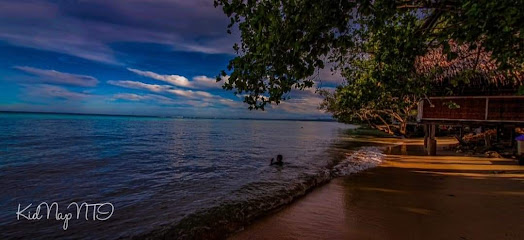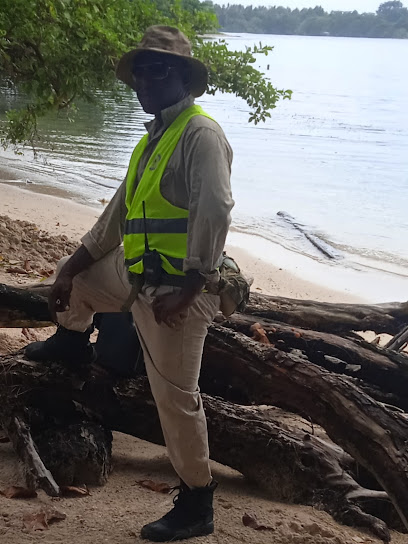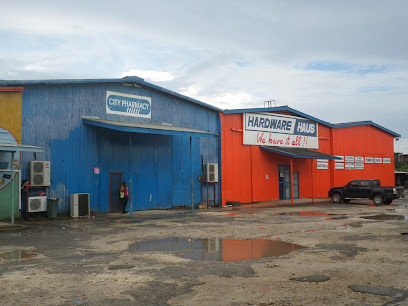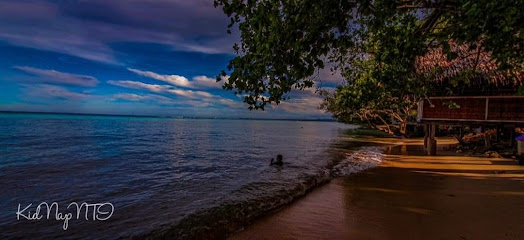
Kavieng: The Gateway to New Ireland's Wonders
Explore the pristine waters, rich culture, and natural beauty of Kavieng, Papua New Guinea – a hidden paradise for divers, adventurers, and culture enthusiasts.
Kavieng, a coastal town located on the northern tip of New Ireland in Papua New Guinea, is a hidden gem waiting to be discovered. Known for its crystal-clear waters and vibrant marine life, Kavieng offers an unparalleled experience for divers and snorkelers. The town is surrounded by a series of coral reefs, making it a prime destination for underwater adventurers. Whether you are an experienced diver or a novice, the underwater world of Kavieng will leave you spellbound with its colorful reefs, diverse marine species, and historic shipwrecks. Apart from its aquatic attractions, Kavieng is also steeped in rich culture and history. The town's markets are bustling with local vendors selling fresh produce, traditional crafts, and handmade souvenirs. A visit to these markets provides a glimpse into the daily life of the local people and their customs. The area's history can be explored through various WWII relics scattered around the town and nearby islands, offering a poignant reminder of the past. Kavieng's natural beauty extends beyond the ocean. The surrounding landscape is dotted with lush plantations, serene beaches, and cascading waterfalls. Visitors can enjoy activities such as kayaking, fishing, and hiking through the verdant trails that lead to stunning viewpoints. Whether you are seeking adventure or relaxation, Kavieng's diverse offerings cater to all types of travelers.
Local tips in Kavieng
- Bring your own snorkeling or diving gear if you can, as rental options can be limited.
- Visit the local markets early in the morning for the freshest produce and unique handmade crafts.
- Hire a local guide for tours to WWII relics and historical sites to gain deeper insights into the area's history.
- Respect local customs and traditions; always ask for permission before taking photos of people.
- Carry cash, as ATMs and card payment options are limited in the town.
Kavieng: The Gateway to New Ireland's Wonders
Kavieng, a coastal town located on the northern tip of New Ireland in Papua New Guinea, is a hidden gem waiting to be discovered. Known for its crystal-clear waters and vibrant marine life, Kavieng offers an unparalleled experience for divers and snorkelers. The town is surrounded by a series of coral reefs, making it a prime destination for underwater adventurers. Whether you are an experienced diver or a novice, the underwater world of Kavieng will leave you spellbound with its colorful reefs, diverse marine species, and historic shipwrecks. Apart from its aquatic attractions, Kavieng is also steeped in rich culture and history. The town's markets are bustling with local vendors selling fresh produce, traditional crafts, and handmade souvenirs. A visit to these markets provides a glimpse into the daily life of the local people and their customs. The area's history can be explored through various WWII relics scattered around the town and nearby islands, offering a poignant reminder of the past. Kavieng's natural beauty extends beyond the ocean. The surrounding landscape is dotted with lush plantations, serene beaches, and cascading waterfalls. Visitors can enjoy activities such as kayaking, fishing, and hiking through the verdant trails that lead to stunning viewpoints. Whether you are seeking adventure or relaxation, Kavieng's diverse offerings cater to all types of travelers.
When is the best time to go to Kavieng?
Iconic landmarks you can’t miss
New Guinea
Explore New Guinea, a tropical paradise with stunning landscapes, vibrant cultures, and extraordinary biodiversity, perfect for adventurous travelers.

Nusa Island Retreat
Experience the untouched beauty and rich culture of Papua New Guinea at the serene Nusa Island Retreat, your perfect island getaway.

Kavieng Airport New Ireland AYKV
Discover New Ireland's breathtaking beauty and rich culture with Kavieng Airport as your travel gateway to adventure and tranquility.

Kavieng Niu Lodge
Discover the beauty of Papua New Guinea at Kavieng Niu Lodge, your perfect base for adventure and relaxation in New Ireland Province.

Kavieng Village Resort
Kavieng Village Resort: Your serene escape in New Ireland, where stunning landscapes meet rich local culture for an unforgettable travel experience.

Kokopo War Museum
Explore the Kokopo War Museum for a captivating journey through Papua New Guinea's WWII history with engaging exhibits and rich artifacts.

Proposed VSAT Location
Explore the captivating landmark in Kavieng, where history meets stunning natural beauty in New Ireland Province, Papua New Guinea.

Lissenung Island Resort
Discover paradise at Lissenung Island Resort, where pristine beaches and vibrant coral reefs await in the heart of Papua New Guinea.

Kavieng Transit Haus
Discover the charm of New Ireland at Kavieng Transit Haus, offering a cozy atmosphere and convenient access to local attractions and stunning landscapes.

Kalaro Guest Haus
Experience the serene beauty of Kavieng at Kalaro Guest Haus, a cozy cottage retreat surrounded by nature's wonders.

The Rocks Bar
Explore the authentic culinary delights of New Ireland at The Rocks Bar, a charming restaurant offering stunning views and local flavors.

Kavieng Beach Resort
Discover the tranquil beauty of Kavieng Beach Resort, where luxury meets adventure on the stunning shores of New Ireland Province.

New Ireland Tourism Information Office
Explore New Ireland with the New Ireland Tourism Information Office – your guide to adventure, culture, and stunning landscapes in Papua New Guinea.

Unmissable attractions to see
Lissenung Island Resort
Experience the ultimate island getaway at Lissenung Island Resort, where adventure meets relaxation in the stunning waters of Kavieng, New Ireland Province.

Laraibina Eels New Ireland
Explore the captivating world of Laraibina Eels in New Ireland, where nature and culture intertwine for a unique adventure.

Atmagau
Explore the breathtaking landscapes and rich cultural heritage of Atmagau, a stunning tourist attraction in Papua New Guinea's New Ireland Province.

Lamai Wara
Explore the stunning natural beauty and vibrant culture at Lamai Wara in Port Moresby, a must-visit destination in Papua New Guinea.

Nusa Districk
Explore the enchanting Nusa District, a serene garden oasis in Kavieng, Papua New Guinea, perfect for nature lovers and peaceful retreats.

Toi Island
Explore the captivating beauty of Toi Island in New Ireland Province, a serene escape with stunning landscapes and vibrant marine life.

Nago Beach
Discover the natural beauty of Nago Beach in Kavieng, a tropical paradise perfect for relaxation, snorkeling, and stunning sunsets.

Albatross Wilderness
Explore Albatross Wilderness in New Ireland Province, a paradise of stunning landscapes, vibrant marine life, and rich cultural experiences.

Essential places to dine
Vision City Mega Mall
Discover unparalleled shopping and entertainment at Vision City Mega Mall in Port Moresby – a true retail paradise for tourists.

The Stanley Hotel & Suites
Experience unparalleled luxury at The Stanley Hotel & Suites in Port Moresby - your gateway to Papua New Guinea's vibrant culture.

Airways Hotel
Experience luxury at Airways Hotel in Port Moresby - your perfect gateway with exquisite dining and modern amenities.

Lamana Hotel (Port Moresby)
Discover luxury and local charm at Lamana Hotel in Port Moresby - your gateway to Papua New Guinea's rich culture.

Lae International Hotel
Experience comfort and convenience at Lae International Hotel, your ideal base for exploring the captivating Morobe Province in Papua New Guinea.

The Linville Hotel
Experience warm hospitality and delicious cuisine at The Linville Hotel – your perfect getaway in Queensland's picturesque landscapes.

Madang Resort Hotel
Discover paradise at Madang Resort Hotel – where luxury meets nature in breathtaking Papua New Guinea.

Dynasty Seafood Restaurant
Discover fresh seafood delights at Dynasty Seafood Restaurant in Vision City Mega Mall, Port Moresby - A must-visit culinary destination.

Jackson's Bar Restaurant & Gaming
Discover the vibrant nightlife at Jackson's Bar Restaurant & Gaming in Port Moresby – where great food meets exciting entertainment.

Gazelle International Hotel
Discover comfort and local charm at Gazelle International Hotel in Kokopo, your gateway to exploring East New Britain Province.

Edge Cafe Port Moresby
Discover Edge Cafe in Port Moresby - A charming brunch destination offering local flavors and warm hospitality in Papua New Guinea.

Savannah Bistro
Experience the vibrant flavors of Papua New Guinea at Savannah Bistro, a must-visit restaurant in Port Moresby offering fresh local cuisine.

Asia Aromas Harbour Side West PNG
Experience authentic Chinese cuisine at Asia Aromas Harbour Side in Lae, PNG - where flavors meet stunning harbor views.

The Shady Rest Hotel
Experience comfort and convenience at The Shady Rest Hotel in Port Moresby - your perfect base for exploration.

Grand Papua Hotel, a member of Radisson Individuals
Discover unparalleled luxury at Grand Papua Hotel in Port Moresby – your gateway to experiencing Papua New Guinea's vibrant culture.

Markets, malls and hidden boutiques
Joe Tong's Supermarket
Discover the local flavors and essentials at Joe Tong's Supermarket, a vibrant shopping destination in Kavieng, New Ireland Province.

Kavieng Main Market
Explore the vibrant Kavieng Main Market, a cultural hub offering fresh produce, local crafts, and an authentic taste of Papua New Guinea.

Bisi Supermarket
Explore the vibrant local culture and flavors at Bisi Supermarket in Kavieng, New Ireland Province – a grocery store filled with treasures.

Patu 23 Limited
Explore the vibrant offerings of Patu 23 Limited, a key supermarket in Kavieng, providing everything from fresh local produce to household essentials.

Hardware Haus Kavieng
Discover the charm of Hardware Haus Kavieng, your go-to hardware store for tools, crafts, and local treasures in New Ireland Province.

Bisi Trading Ltd
Discover authentic local products at Bisi Trading Ltd in Kavieng, your go-to warehouse for unique treasures from New Ireland.

L&P TRADING
Discover local convenience at L&P Trading in Kavieng, your go-to store for essentials and snacks during your New Ireland adventures.

Increase Safety Products
Discover essential safety supplies and home goods at Increase Safety Products in Kavieng, New Ireland Province, ensuring a safe and enjoyable visit.

HAMAMAS TRADING LTD
Explore the local flavors and essentials at Hamamas Trading Ltd, a grocery store in Kavieng, New Ireland Province, perfect for all your travel needs.

Kavieng Power Station
Explore the Kavieng Power Station in New Ireland, where modern energy meets stunning natural beauty, offering insights into sustainable living.

Kopkop Store
Discover the vibrant culture and unique craftsmanship at Kopkop Store in Kavieng, your gateway to authentic New Ireland shopping experiences.

Diamond Brothers Ltd
Explore the vibrant local flavors of New Ireland at Diamond Brothers Ltd, a grocery store filled with local produce and imported goods.

Solar Market
Discover the vibrant Solar Market in Kavieng, where local culture, fresh produce, and artisan crafts come together in a unique island experience.

City Pharmacy Kavieng
Discover health essentials and personal care at City Pharmacy Kavieng, a trusted pharmacy in New Ireland Province for all your medical needs.

Long Sing Auto Parts & Tools
Discover the essential auto parts and tools at Long Sing Auto Parts & Tools in Kavieng, your reliable pit stop for automotive needs.

Essential bars & hidden hideouts
Nusa Island Retreat
Experience the ultimate island getaway at Nusa Island Retreat, where luxury meets nature in New Ireland, Papua New Guinea.

Kavieng Niu Lodge
Experience the natural beauty and rich culture of Papua New Guinea at Kavieng Niu Lodge, your tranquil retreat in New Ireland Province.

Kavieng Transit
Discover the vibrant ambiance and local flavors at Kavieng Transit, a must-visit bar in Papua New Guinea's stunning New Ireland Province.

Kavieng Transit Haus
Experience comfort and local charm at Kavieng Transit Haus, your ideal guest house in New Ireland Province, Papua New Guinea.

Kavieng Club
Experience local culture and vibrant nights at Kavieng Club, the heart of entertainment in Kavieng, New Ireland Province.

Hot Rooster
Experience the vibrant flavors of Kavieng at Hot Rooster, a fast-food haven serving local and international delights.

The Rocks Bar
Discover the vibrant atmosphere and local flavors at The Rocks Bar in Kavieng, a must-visit restaurant on your travel itinerary.

Local Phrases
-
- HelloYap
[yap] - GoodbyeLam na
[lam na] - YesEe
[ee] - NoNee
[nee] - Please/You're welcomePlis
[plis] - Thank youTankiu
[tankiu] - Excuse me/SorrySori
[sori] - How are you?Kam lukim yu?
[kam lookim yu] - Fine. And you?I orait. Nau yu?
[i orait. now yu] - Do you speak English?Yu save toktok long English?
[yu save toktok long English] - I don't understandMi no save long em
[mi no save long em]
- HelloYap
-
- I'd like to see the menu, pleaseMi laik lukim menu, plis
[mi laik lookim menu, plis] - I don't eat meatMi no kaik kaukau
[mi no kaik kaukau] - Cheers!Kam pai!
[kam pai] - I would like to pay, pleaseMi laik painim moni, plis
[mi laik painim moni, plis]
- I'd like to see the menu, pleaseMi laik lukim menu, plis
-
- Help!Halivim mi!
[halivim mi] - Go away!Go lukim!
[go lookim] - Call the Police!Kolim Polis!
[kolim Polis] - Call a doctor!Kolim dokta!
[kolim dokta] - I'm lostMi les long rot
[mi les long rot] - I'm illMi sik
[mi sik]
- Help!Halivim mi!
-
- I'd like to buy...Mi laik baim...
[mi laik baim] - I'm just lookingMi tasol lukim
[mi tasol lookim] - How much is it?Em i stap long hamas?
[em i stap long hamas] - That's too expensiveEm i stap long hamas tumas
[em i stap long hamas tumas] - Can you lower the price?Yu inap katim hamas?
[yu inap katim hamas]
- I'd like to buy...Mi laik baim...
-
- What time is it?Em wankain taim?
[em wankain taim] - It's one o'clockEm i wan o'klak
[em i wan o'klak] - Half past (10)Long hap pasten (10)
[long hap pasten (10)] - MorningMoning
[moning] - AfternoonApinun
[apinun] - EveningEvenin
[evenin] - YesterdayIstap tude
[istap tude] - TodayTude
[tude] - TomorrowTumoro
[tumoro] - 1Wan
[wan] - 2Tu
[tu] - 3Tri
[tri] - 4Fo
[fo] - 5Faiv
[faiv] - 6Siks
[siks] - 7Seven
[seven] - 8Eit
[eit] - 9Nain
[nain] - 10Ten
[ten]
- What time is it?Em wankain taim?
-
- Where's a/the...?Em i stap we...?
[em i stap we] - What's the address?Em i stap long adres?
[em i stap long adres] - Can you show me (on the map)?Yu inap soim mi (long map)?
[yu inap soim mi (long map)] - When's the next (bus)?Wanem taim next (bus)?
[wanem taim next (bus)] - A ticket (to ....)Wan tiket (long ....)
[wan tiket (long ....)]
- Where's a/the...?Em i stap we...?
History of Kavieng
-
Before European contact, the area now known as Kavieng was inhabited by various indigenous groups who relied on fishing, agriculture, and trade. The local culture was rich with traditional practices, languages, and social structures, including intricate systems of clan and tribal governance.
-
In the late 19th century, Kavieng became part of German New Guinea. The Germans established administrative and trading posts in the area. The impact of German colonization included the introduction of new agricultural practices, religion, and education systems, as well as infrastructure developments such as roads and buildings.
-
During World War I, Australian forces occupied Kavieng as part of their military campaign against German colonial territories in the Pacific. The town became an important strategic location for the Allies, and the German influence waned significantly during this period.
-
Following World War I, Kavieng came under Australian administration as part of the League of Nations mandate. The Australians continued to develop the town, focusing on economic activities such as copra production. The period also saw improvements in healthcare and education for the local population.
-
Kavieng was significantly impacted during World War II. The Japanese forces occupied the town in 1942, turning it into a major military base. Allied forces conducted several bombing raids, which caused extensive damage. The occupation and subsequent battles left lasting scars on the physical and social landscape of Kavieng.
-
After World War II, Kavieng was part of the United Nations Trust Territory of New Guinea, administered by Australia. The town underwent extensive reconstruction to repair war damages. Infrastructure projects were initiated, and efforts were made to revitalize the economy and improve living standards.
-
When Papua New Guinea gained independence in 1975, Kavieng became the capital of New Ireland Province. The town has since evolved into a vibrant community, balancing traditional culture with modern influences. Today, it serves as a hub for tourism, particularly known for its diving spots and rich cultural heritage.
Kavieng Essentials
-
Kavieng is located on the northern tip of New Ireland Island in Papua New Guinea. The most common way to reach Kavieng is by air. Kavieng Airport (KVG) has regular flights from Port Moresby, the capital city of Papua New Guinea. Airlines such as Air Niugini and PNG Air operate these flights. Alternatively, you can also take a boat from Rabaul in East New Britain Province, but this journey can be long and dependent on weather conditions.
-
Once in Kavieng, transportation options include taxis, buses, and rental cars. Taxis are available at the airport and around town, but it’s advisable to agree on a fare before starting your journey. Local buses and minibuses (PMVs) are a budget-friendly option and can take you to various parts of New Ireland. For more freedom, consider renting a car, but be aware that road conditions can vary from paved to rugged.
-
The official currency in Papua New Guinea is the Papua New Guinean Kina (PGK). While credit cards are accepted in some hotels and larger establishments, it is advisable to carry cash for smaller transactions and purchases in local markets. ATMs are available in Kavieng, but it’s wise to withdraw sufficient cash before traveling to remote areas.
-
Kavieng is generally safe for tourists, but standard precautions should be taken. Avoid walking alone at night and be cautious of your surroundings. Petty theft can occur, so keep valuables secure. The main areas to be cautious of are the market areas and less-populated outskirts, especially after dark. Always follow local advice and remain vigilant.
-
In case of emergency, dial 000 for police, fire, or medical assistance. The Kavieng General Hospital provides medical services for emergencies. It is highly recommended to have comprehensive travel insurance that covers medical evacuation if necessary. For minor health issues, local pharmacies can provide over-the-counter medications.
-
Fashion: Do dress modestly, especially in rural areas. Avoid overly revealing clothing. Religion: Do respect local customs and traditions. Always ask for permission before taking photos of people or religious sites. Public Transport: Do be polite and greet the driver. Don’t eat or drink on public transport as it is considered impolite. Greetings: Do greet people with a smile and a handshake. A friendly 'Monin' (good morning) or 'Apinun' (good afternoon) is appreciated. Eating & Drinking: Do try local foods and accept food and drink offerings graciously. Don’t waste food as it is considered disrespectful.
-
To experience Kavieng like a local, visit the local markets where you can buy fresh seafood and traditional handicrafts. Engage with the locals; they are often friendly and enjoy sharing stories about their culture and heritage. Don’t miss out on exploring the beautiful beaches and diving spots, known for their rich marine biodiversity. For an authentic experience, attend a local festival or cultural event, where you can witness traditional dances and ceremonies.
Trending Landmark in Kavieng
Nearby Cities to Kavieng
-
Things To Do in Rabaul
-
Things To Do in Kokopo
-
Things To Do in Kimbe
-
Things To Do in Lae
-
Things To Do in Madang
-
Things To Do in Arawa
-
Things To Do in Goroka
-
Things To Do in Taro Island
-
Things To Do in Wewak
-
Things To Do in Mount Hagen
-
Things To Do in Alotau
-
Things To Do in Buka
-
Things To Do in Port Moresby
-
Things To Do in Gizo
-
Things To Do in Vanimo








